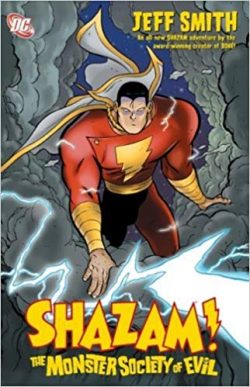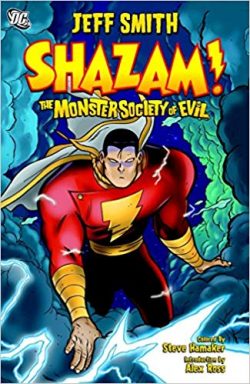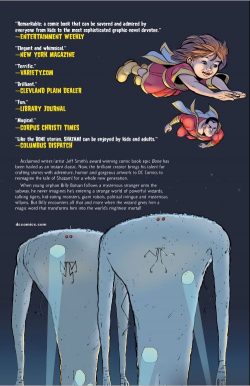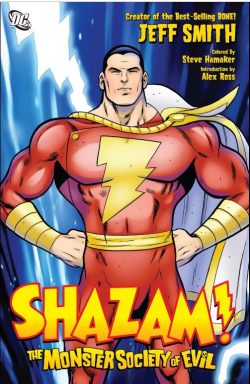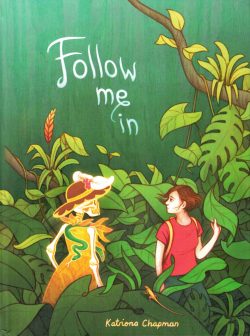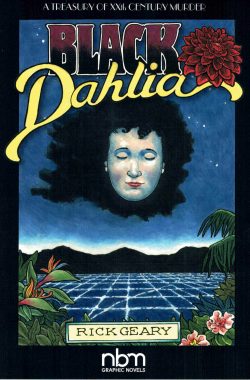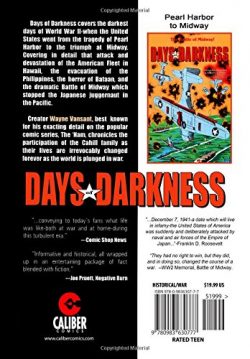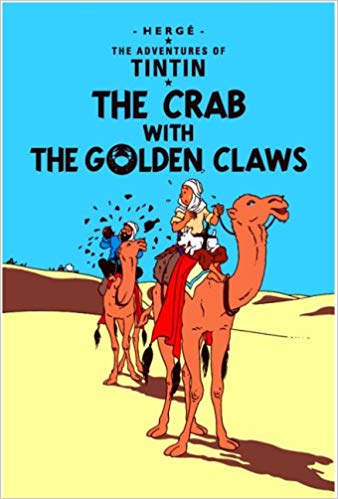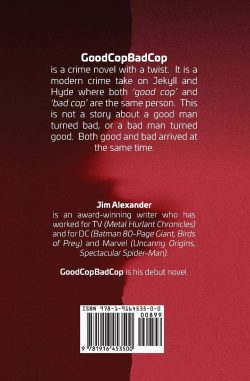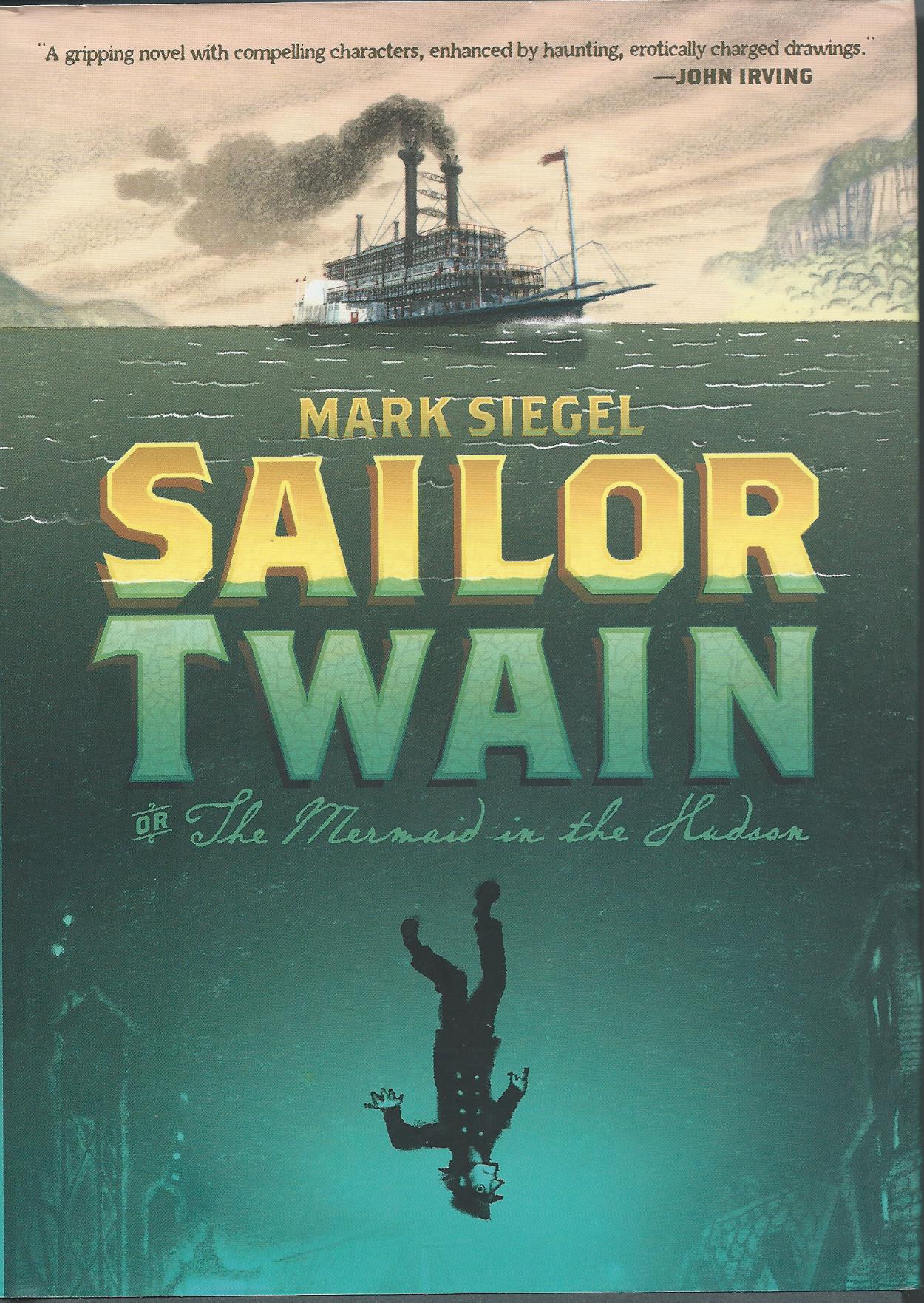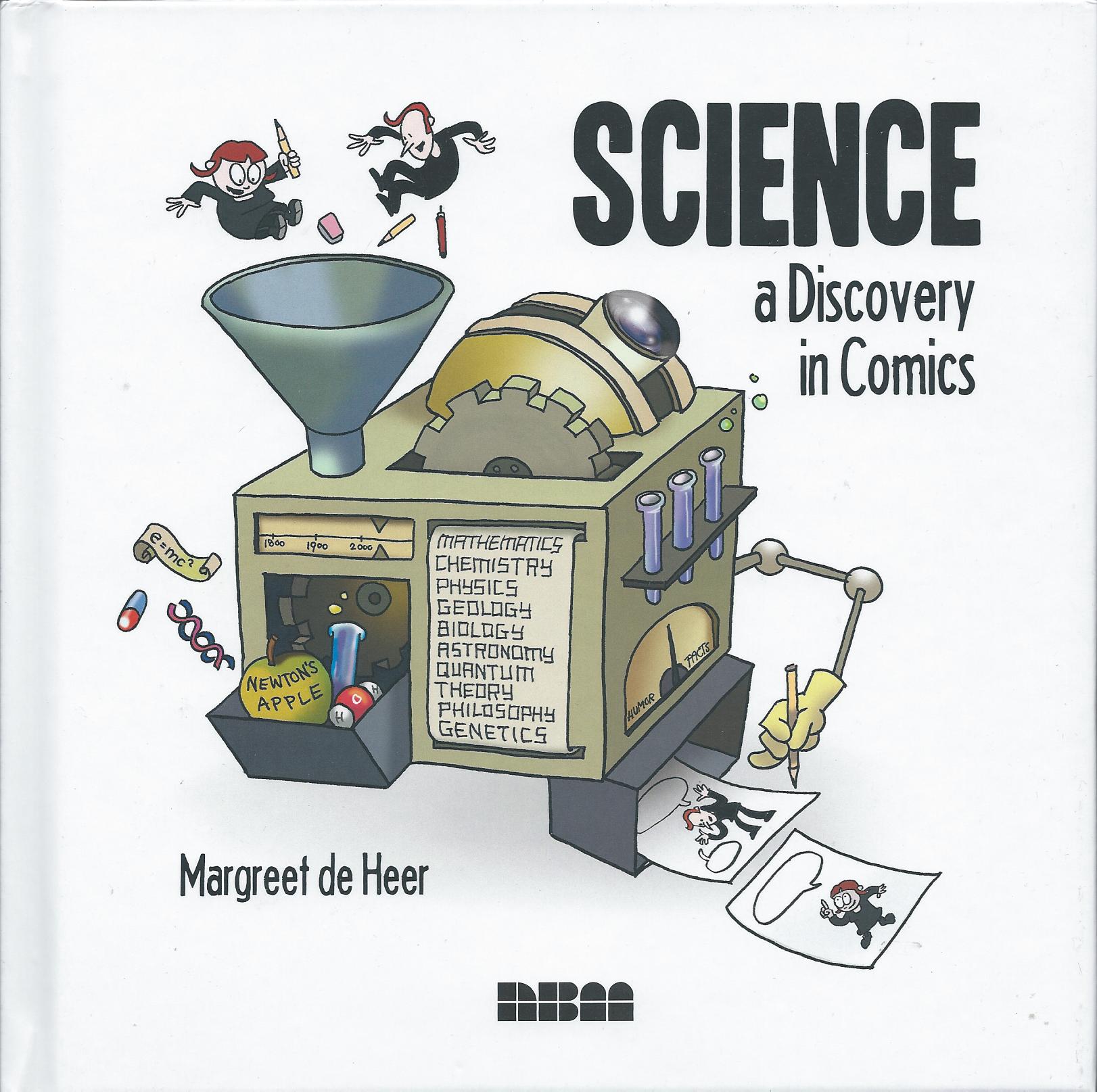
By Hal Foster (Fantagraphics Books)
ISBN: 978-1 68396-072-0
Win’s Christmas Gift Recommendation: Ideal for anybody who ever dreamed or wondered… 10/10
Rightly reckoned one of the greatest comic strips of all time, the majestic and nigh-mythical saga of a king-in-exile who became one of the greatest warriors in an age of unparalleled heroes is at once fantastically realistic and beautifully, perfectly abstracted – an indisputable paradigm of adventure fiction where anything is possible and justice will always prevail. It is the epic we all want to live in…
On one thing let us be perfectly clear: Hal Foster’s Prince Valiant is not historical. It is far better and more real than that.
Possibly the most successful and evergreen fantasy creation ever conceived, Prince Valiant in the Days of King Arthur launched on Sunday 13th February 1937, a glorious weekly, full-colour window not onto the past but rather onto a world that should have been. It followed the tempestuous life of a refugee boy driven by invaders from his ancestral homeland of faraway Thule who persevered and, through tenacity, imagination and sheer grit, rose to become one of the mightiest heroes of the age of Camelot.
As depicted by the incredibly gifted Foster, this noble scion would, over the years, grow to mighty manhood helming a heady sea of wonderment; roaming the globe and siring a dynasty of equally puissant heroes whilst captivating and influencing generations of readers and thousands of creative types in all the arts.
There have been films, cartoon series and all manner of toys, games and collections based on the feature – one of the few newspaper strips to have lasted from the thunderous 1930s to the present day (well over 4000 episodes and counting) and, even in these declining days of newspaper cartooning, it still claims over 300 American papers as its home.
Foster produced the strip, one spectacular page a week until 1971, when, after auditioning such notables as Wally Wood and Gray Morrow, Big Ben Bolt artist John Cullen Murphy was selected to draw the feature. Foster carried on as writer and designer until 1980, after which he fully retired and Murphy’s son took over scripting duties.
In 2004 Cullen Murphy also retired (he died a month later on July 2nd) but the strip soldiered on under the extremely talented auspices of artist Gary Gianni and writer Mark Schultz and latterly Thomas Yeates, conquering one more exotic land by making it onto the world wide web.
The first three exquisite oversized hardback volumes (362 x 268mm) are available as a monumental gift set nobody could resist. They reprint in glorious colour – spectacularly restored from Foster’s original printer’s proofs – the princely pristine Sunday pages cumulatively spanning February 1937 to 20th December 1942: six years of formative forays of an instantly impressive tale which promised much and delivered far more than anybody might have suspected during those dim and distant days…
Volume 1 opens with editor Brian M. Kane’s informative picture and photo-packed potted history of ‘Harold Rudolf Foster: 1892-1982’ after which Fred Schreiber conducts ‘An Interview with Hal Foster’ – as first seen in Nemo: The Classic Comics Magazine (1984).
Moreover, after the superb Arthurian epic exploits of the quintessential swashbuckling hero which follows, this initial collection is rounded off by Kim Thompson’s discourse on the many iterations of reprints over the years and around the world in ‘A History of Valiants’…
The actual action-packed drama then commences in distant Scandinavia as the King of Thule, his family and a few faithful retainers dash for a flimsy fishing boat, intent only on escaping the murderous intentions of a usurper’s army.
Their voyage carries them to the barbarous coast of Britain to battle bands of wild men before securing a safe retreat in the gloomy fens of East Anglia. After many hard fights they reach an uneasy détente with the locals and settle into a harsh life as regal exiles…
The young Prince Valiant is but five years old when they arrive and his growing years in a hostile environment toughen the boy, sharpen his wits and give him an insatiable taste for mischief and adventure.
He befriends a local shepherd boy and together their escapades include challenging the marauding ancient dinosaurs which infest the swamp, battling a hulking man-brute and bedevilling a local witch. In retaliation the hag Horrit predicts that Val’s life will be long and packed with incredible feats… but always tainted by great sorrow.
All that, plus the constant regimen of knightly training and scholarly tuition befitting an exile learning how to reclaim his stolen kingdom, make the lad a veritable hellion, but everything changes when his mother passes away. After a further year of intense schooling in the arts of battle, Valiant leaves the Fens and make his way in the dangerous lands beyond…
Whilst sparring with his boyhood companion, Val unsuspectingly insults Sir Launcelot who is fortuitously passing by. Although the noble warrior is sanguine about the cheeky lad’s big mouth, his affronted squire attempts to administer a stern punishment and is rewarded with a thorough drubbing. Indeed, Launcelot has to stop the Scion of Thule from slitting the battered and defeated man’s throat.
Although he has no arms, armour, steed or money, Valiant swears that he too will be a Knight…
Luck is with the Pauper Prince. After spectacularly catching and taming a wild stallion, his journey is interrupted by gregarious paladin Sir Gawain, who shares a meal and regales the boy with tales of chivalry and heroism. When their alfresco repast is spoiled by robber knight Sir Negarth who unfairly strikes the champion of Camelot, Val charges in. Gawain regains consciousness to find the threat ended, Negarth hogtied and his accomplice skewered…
Taking Val under his wing, wounded Gawain escorts the boy and his prisoner to Camelot, but their journey is delayed by a gigantic dragon. Val kills it too – with the assistance of Negarth – and spends the rest of the trip arguing that the rogue should be freed for his gallantry…
Val is still stoutly defending the scoundrel at the miscreant’s trial before King Arthur, and is rewarded by being appointed Gawain’s squire. Unfortunately, the lad responds badly to being teased by the other knights-in-training and quickly finds himself locked in a dungeon whilst his tormentors heal and the remaining Knights of the Round Table ride out to deal with an invasion of Northmen…
Whilst the flowers of chivalry are away, a plot is hatched by scheming Sir Osmond and Baron Baldon. To recoup gambling debts, they capture and ransom Gawain, but have not reckoned on the dauntless devotion and ruthless ingenuity of his semi-feral squire.
Easily infiltrating the bleak fortress imprisoning the hero, Val liberates his mentor through astounding feats of daring and brings the grievously wounded knight to Winchester Heath and Arthur…
As Gawain recuperates, he is approached by a young maiden. Ilene is in need of a champion and – over his squire’s protests – the still gravely unfit knight dutifully complies. Val’s protests might have been better expressed had he not been so tongue-tied by the most beautiful girl he has ever seen…
The quest to rescue Ilene’s parents is delayed when an unscrupulous warrior in scarlet challenges them, intent on possessing the lovely maiden. Correctly assessing Gawain to be no threat, the Red Knight does not live long enough to revise his opinion of the wild-eyed boy who then attacks him…
Leaving Ilene and the re-injured Gawain with a hermit, Valiant continues on alone to Branwyn Castle, recently captured by an “Ogre†who is terrorising the countryside. Through guile, force of arms and devilish tactics the boy ends that threat forever.
This is an astonishing tour de force of graphic bravura that no fan could ever forget. Aspiring cartoonist Jack Kirby certainly didn’t: he recycled Val’s outlandish outfit used to terrorise the Ogre’s soldiers as the visual basis for his 1970s horror-hero Etrigan the Demon…
Having successfully routed the invaders and freed Ilene’s family, Val begins earnestly courting the grateful girl. His prophecy of lifelong misery seems assured however, when her father regretfully informs him that she is promised to Arn, son and heir of the King of Ord…
Even before that shock can sink in, Valiant is called away again. Ailing Gawain has been abducted by sorceress Morgan le Fey, who is enamoured of the knight’s manly charms…
When Val confronts her, she drugs him with a potion and he endures uncounted ages in her dungeon before escaping. Weak and desperate, he makes his way to Camelot and enlists Merlin in a last-ditch ploy to defeat the witch and save his adored mentor…
In the meantime, events have progressed and Val’s bold plans to win Ilene are upset when invitations to her wedding arrive at Camelot. Initially crushed, the resilient youth determines to travel to Ord and challenge Prince Arn for her hand.
Their meeting is nothing like Val imagined but, after much annoying interference, he and the rather admirable Arn finally engage in their oft-delayed death-duel, only to be again distracted when news comes that Ilene has been stolen by Viking raiders…
What follows is another unparalleled moment of comics magnificence as Valiant sacrifices everything for honour, gloriously falls to superior forces, wins possession of Flamberge (the legendary Singing Sword which is brother to Excalibur), is captured and then reunited with Ilene… only to lose her again to the cruellest of fates…
After escaping from the Vikings and covering himself with glory at the Lists in Camelot – although he doesn’t realise it – the heartsick, weary Prince returns to his father in the melancholy Anglian fens, again encountering ghastly Horrit and nearly succumbing to fever.
When he recovers months later, he has a new purpose: he and his faithful countrymen will travel to Thule and rescue the nation from the cruel grip of usurper Sligon. Unfortunately, during the preparations Valiant discovers his region of Britain has been invaded by Saxons and is compelled by his honour to race to Camelot and warn Arthur…
To Be Continued…
(Volume 1: All comics material © 2009 King Features Syndicate except Tarzan page, © 2009 ERB Inc. All other content and properties © 2009 their respective creators or holders. All rights reserved.)
Volume 2 reprints in the perfectly-restored Sunday pages from January 1st 1939 to 29th December 1940, following Sir Gawain’s extremely capable squire as he rushes to warn Camelot of invasion by rapacious Saxons via the vast Anglian Fens. Here the Royal Family of Thule have hidden since being ousted from their Nordic Island Kingdom by the villainous usurper Sligon.
After a breathtaking battle which sees the Saxons repulsed and the battle-loving boy-warrior knighted upon the field of victory, Valiant begins a period of globe-trotting through the fabled lands of Europe just as the last remnants of the Roman Empire is dying in deceit and intrigue.
Firstly, Val returns to Thule and restores his father to the throne, narrowly escaping the alluring wiles of a conniving beauty with an eye to marrying the Heir Apparent. Soon bored with peace and plenty, the roving royal wildcat then encounters a time-twisting pair of mystical perils who show him the eventual fate of all mortals. Sobered but not daunted, he makes his way towards Rome, where he will become unwittingly embroiled in the manic machinations of the Last Emperor, Valentinian.
Before that however, he is distracted by an epic adventure that would have struck stunning resonances for the readership at the time. With episode #118 (14th May 1939) Val joins the doomed knights of mountain fortress Andelkrag, who alone and unaided hold back the assembled might of the terrifying hordes of Attila the Hun currently decimating the civilisations of Europe and now gathered to wipe out its last vestige.
With Hitler and Mussolini hogging the headlines and Modern European war seemingly inevitable, Val shares the Battle of Decency and Right against untrammelled Barbarism. His epic struggle and sole survival comprise one of the greatest episodes of glorious, doom-fated chivalry in literature…
After the fall of the towers of Andelkrag, Valiant made his way onward to diminished Rome, picking up a wily sidekick in the form of cutpurse vagabond Slith. Once more he is distracted and delayed by dastardly Huns. The indomitable lad resolves to pay them back in kind, gathering dispossessed victims of Hunnish depredations and forging them into a resistance army of guerrilla-fighters – the Hun-Hunters…
Thereafter he liberates the vassal city Pandaris, driving back the invaders and their collaborator allies in one spectacular coup after another.
Valiant eventually reunites with equally action-starved Round Table companions Sir Tristram and Sir Gawain to make fools of the Hun, who have lost heart after the death of their charismatic leader Attila (nothing to do with Val, just a historical fact). When Slith falls for a beauteous warrior princess, the English Knights leave him to a life of joyous domesticity and move ever on.
An unexpected encounter with a giant and his unconventional army of freaks leads to the heroes inadvertently helping a band of marshland refugees (from Hunnish atrocity) before establishing the nation-state of Venice until at long last – after a after a side-trip to the fabulous city of Ravenna – the trio cross the fabled Rubicon and plunge into a hotbed of political tumult.
Unjustly implicated in a web of murder and double-dealing, the knights barely escape with their lives and split up to avoid pursuit. Tristan goes back to England and a star-crossed rendezvous with the comely Isolde, Gawain takes ship for fun in Massilia and Valiant, after an excursion to the rim of fiery Vesuvius, boards a pirate scow for Sicily and further adventure.
To Be Continued…
(Volume 2: Prince Valiant © 2009 King Features Syndicate. All other content and properties © 2009 their respective creators or holders. All rights reserved.)
Volume 3 of the most successful and evergreen fantasy creation ever conceived offers the Sunday pages from January 5th 1941 to 20th December 1942, but only after erudite foreword ‘Modestly, Foster’ by Dan Nadel.
The action opens in the shadow of fiery Vesuvius as Val’s vessel is attacked by self-proclaimed Sea-King Angor Wrack. Even our fierce warrior-prince’s martial might is insufficient against insurmountable odds and the young Lord is captured and enslaved, his fabled Singing Sword confiscated by the victorious pirate.
Thus begins an astonishingly impressive chapter in the hero’s history. Val becomes a galley slave, escapes and washes up, starving and semi-comatose on the lost shores of the Misty Isles. Delirious, he glimpses his future wife Queen Aleta when she re-provisions his boat before casting him back to the sea’s mercies.
The Misty Isles are secure only because of their secret location and the noble girl has broken a great taboo by sparing the shipwrecked lad. Replenished but lost, Val drifts helplessly away but resolves that one day he will discover again the Misty Isles and the enigmatic Aleta…
Eventually he is picked up by more pirates, but overwhelms the captain and takes charge. Finding himself in the island paradise of Tambelaine courting the daughters of the aged King Lamorack, Val encounters Angor Wrack once again, but fails to recover the Singing Sword, precipitating an extended saga of maritime warfare and spectacular voyaging across the Holy Land from Jaffa to Jerusalem.
The vendetta results in both Angor and Val being taken by Arab slavers, but the boy nobly allows Wrack to escape whilst he battles the Bedouin hordes…
Enslaved in Syria, Val’s indomitable will and terrifying prowess are insufficient to his need so he seduces his owner’s daughter to effect an escape, only to stumble into a marital spat between the region’s greatest necromancer and his tempestuous bride.
Reaching Jerusalem, Val finally regains his beloved sword and settles all scores with Angor Wrack before determining to return to the hidden Misty Isles, but once again falls afoul of the pirates infesting the region. After incredible hardships, he is reunited with Aleta but fate drags them apart once more and he departs alone and despondent.
Not for long though, as on reaching Athens he meets the far-larger-than-life Viking Boltar: a Falstaff-like rogue and “honest pirateâ€. Together they rove across the oceans to the heart of the African jungles…
Securing a huge fortune, their Dragonship reaches Gaul and Val is finally reunited with Gawain. After settling a succession of generational feuds between knights and defeating a seductive maniac, the paladins at last return to Britain courtesy of Boltar, just in time to be dispatched by Arthur to the far North to scout Hadrian’s Wall and see if it can still keep the belligerent Picts out.
Unfortunately, libidinous Gawain abandons Val and the lad is captured by Caledonian wild-men and their new allies – a far nastier breed of Vikings intent on conquering England. Tortured almost unto death, the Prince is saved by the ministrations of Julian – a Roman warrior who has seemingly safeguarded the wall for centuries…
When he is recovered, Prince Valiant begins to inflict a terrible and studied revenge upon his tormentors…
To Be Continued…
Rendered in an incomprehensibly lovely panorama of glowing art, Prince Valiant is a lyrical juggernaut of stirring action, exotic adventure and grand romance; blending realistic fantasy with sardonic wit, and broad humour with unbelievably dark violence (the closing text feature ‘Too Violent for American Dog Lovers’, reveals a number of censored panels and changes editors around the world inflicted upon the saga during this period).
Beautiful, captivating and utterly awe-inspiring, Foster’s magnum opus is a World Classic of storytelling, and this magnificent collection is something no adventuresome fan can afford to be without.
(Prince Valiant volume 3 © 2011 King Features Syndicate. All other content and properties © 2011 their respective creators or holders. All rights reserved).
Gift Set © 2017 King Features Syndicate. Published by Fantagraphics Books.
